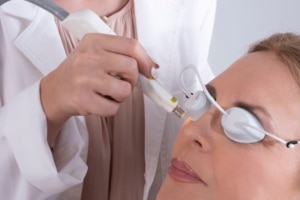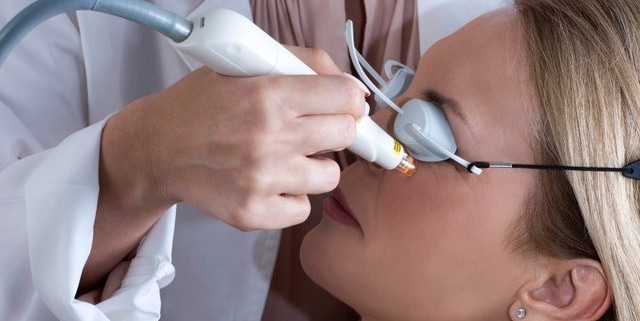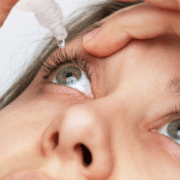Intense Pulsed Light Therapy For Dry Eyes
Dry eye disease is a common condition that affects millions of people worldwide. It can cause discomfort, irritation, and even vision impairment, significantly impacting daily life.
One of the primary causes of dry eye disease is meibomian gland dysfunction (MGD), a condition in which the meibomian glands in the eyelids fail to produce sufficient oil. This oil is essential to maintaining a stable tear film, and without it, tears evaporate too quickly, leading to dry, irritated eyes.
Fortunately, a cutting-edge treatment known as OptiLight IPL (Intense Pulsed Light) offers a solution.
OptiLight IPL is the first and only FDA-approved light therapy specifically designed to treat dry eye disease caused by MGD.
Available at our office in Hummelstown, this advanced treatment uses targeted light pulses to restore proper function to the meibomian glands, offering lasting relief for those struggling with dry eye symptoms.
What is OptiLight IPL and How Does It Work?
OptiLight IPL is a non-invasive root cause light therapy treatment that targets the oil-producing glands in your eyelids, which are responsible for stabilizing the tear film. When these glands deteriorate, become blocked, or underperform, the oil production decreases, causing rapid evaporation of tears. This causes dry eyes.
(According to the National Eye Institute (NEI), dry eye disease affects an estimated 16 million Americans. However, it’s believed that the actual number may be higher, and as use of electronics and computers only increases, it’s likely dry eye disease will increase.)
OptiLight IPL uses intense pulses of light to restore the meibomian glands, reduce inflammation, and improve the overall stability of the tear film.
Unlike traditional IPL treatments, which are often used for cosmetic purposes such as acne or hair removal, OptiLight IPL is specifically designed for treating dry eye disease and meibomian gland dysfunction. The light energy is carefully calibrated to target the glands without causing damage to surrounding tissues, making it both safe and effective.
What is The Process for Dry Eye Light Therapy?

This consultation is crucial for assessing whether IPL therapy is appropriate for you, as it’s specifically designed for treating MGD-related dry eyes. Based on the evaluation, the doctor can recommend a tailored treatment plan, which may include OptiLight IPL therapy or alternative treatments.
If IPL therapy is appropriate, the doctor will discuss the procedure, benefits, and any necessary preparations before scheduling the treatment sessions.
Before each treatment session, a gel is applied to the skin around the eyes to help the light penetrate the skin more effectively. The IPL device then delivers pulses of light to the targeted areas, gently heating the skin and stimulating the meibomian glands to clear any blockages. This action not only improves oil production but also reduces inflammation in the area, which contributes to the improvement of dry eye symptoms.
OptiLight IPL is typically delivered in a series of 4-6 sessions, spaced about 2-4 weeks apart, depending on the severity of the condition. Many patients start to notice improvements after just a few sessions of this light therapy for dry eyes. For sustained results, maintenance treatments may be recommended every 6-12 months.
What to Expect During and After Treatment
During the treatment, patients may feel a mild warming sensation or a slight stinging as the pulses of light are delivered to the skin. This sensation is usually temporary and subsides shortly after the procedure.
After the treatment, it is common for patients to experience some mild redness or swelling around the eyes, but these side effects typically resolve within a few hours.
How OptiLight IPL Compares to Other Dry Eye Treatments
Several treatments exist for dry eye disease, but IPL for dry eyes stands out for its ability to treat the root causes of the condition. Here’s how it compares to other common dry eye treatments:
- Artificial Tears: While artificial tears provide temporary relief, they don’t address the underlying cause of the problem, such as meibomian gland dysfunction.
- Warm Compresses: Warm compresses can help to unclog the meibomian glands, but they are often time-consuming and do not offer the same long-term results.
- Punctal Plugs: Punctal plugs help to retain tears on the surface of the eye, but they do not improve meibomian gland function, so their effects may be limited.
- Prescription Medications: Medications work by reducing inflammation and stimulating tear production, but they often take weeks to show results and may require ongoing use.
Another popular treatment for MGD is the LipiFlow Thermal Pulsation System, which also is offered at Kirman Eye. Like OptiLight IPL, LipiFlow targets the root cause of dry eyes by improving meibomian gland function. However, LipiFlow uses a combination of thermal heat and pulsatile pressure to clear blockages in the glands.
While LipiFlow also offers significant relief from the symptoms of MGD, OptiLight IPL goes a step further by restoring the glands and reducing inflammation in the surrounding tissue, making it a more comprehensive solution that addresses both the mechanical and inflammatory components of dry eye disease.
Dry Eye Relief for Residents in Dauphin County
While dry eye disease can affect anyone, certain environmental factors may make residents of Hummelstown, PA, and surrounding areas more susceptible to developing dry eye symptoms. Our region, with its temperate climate and seasonal changes, can contribute to dry eye discomfort.
Cold winter air and low humidity levels can exacerbate symptoms. Indoor heating systems that dry out the air can trigger symptoms too. Similarly, the summer months can bring allergens like pollen, which can irritate the eyes and trigger seasonal dry eye symptoms.
In addition, many residents spend long hours in front of digital screens for work or leisure, which is linked to digital eye strain and computer vision syndrome (CVS), contributing to dry eyes. (Limited screen time can increase your eye health. Get more tips on how to keep eyes healthy here.)
OptiLight IPL is particularly well-suited for individuals living in environments with varying weather patterns or those who work in conditions that exacerbate dry eyes.
Kirman Eye offers OptiLight IPL as a cutting-edge solution to combat dry eye symptoms. Whether your dry eye symptoms are exacerbated by the local climate, allergens, or digital strain, OptiLight IPL can help restore comfort and improve quality of life.







